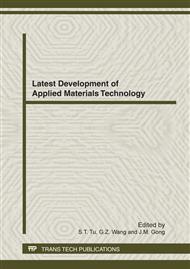p.28
p.36
p.40
p.46
p.51
p.56
p.64
p.68
p.75
Effect of Li Source on Charge/Discharge Performance of LiFePO4
Abstract:
LiFePO4 has been considered as the most promising positive electrode due to its low cost, high theoretical capacity, stability and low toxicity, all highly required in vehicle applications. In this work, LiFePO4 compound was synthesized by the solid carbothermic reduction reactions with different Li resource. The pure LiFePO4 phase was confirmed for all samples by analysis of the XRD results. The different morphologies were obtained due to different Li resources. The potential plateau of all samples is in the range from 3V to 4V. The sample (LiCO3 as the Li resource) has a higher discharge capacity of 118mAhg−1 at 0.2C 20% greater than that of the sample (LiOH as the Li resource). The reason comes maybe from nano pore characteristics, which reduce Li ion diffusion distance, and increase the utilization efficiency of material.
Info:
Periodical:
Pages:
51-55
Citation:
Online since:
April 2012
Authors:
Keywords:
Price:
Сopyright:
© 2012 Trans Tech Publications Ltd. All Rights Reserved
Share:
Citation:


